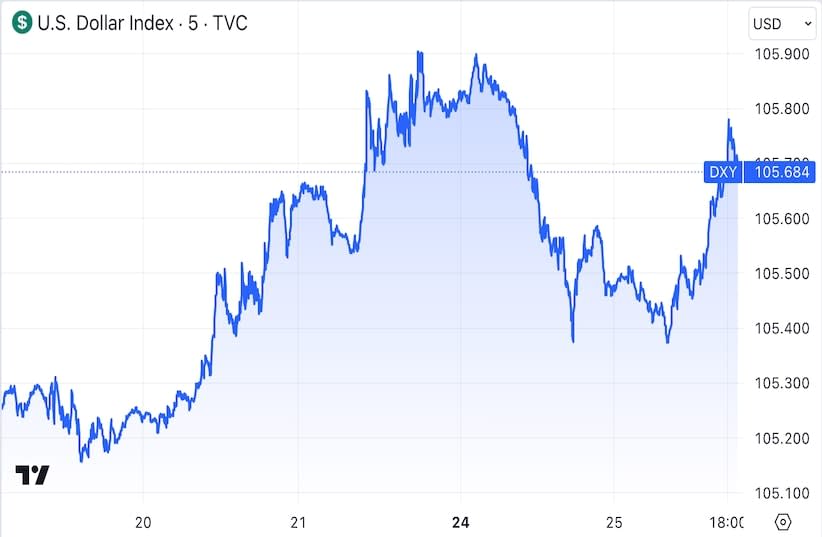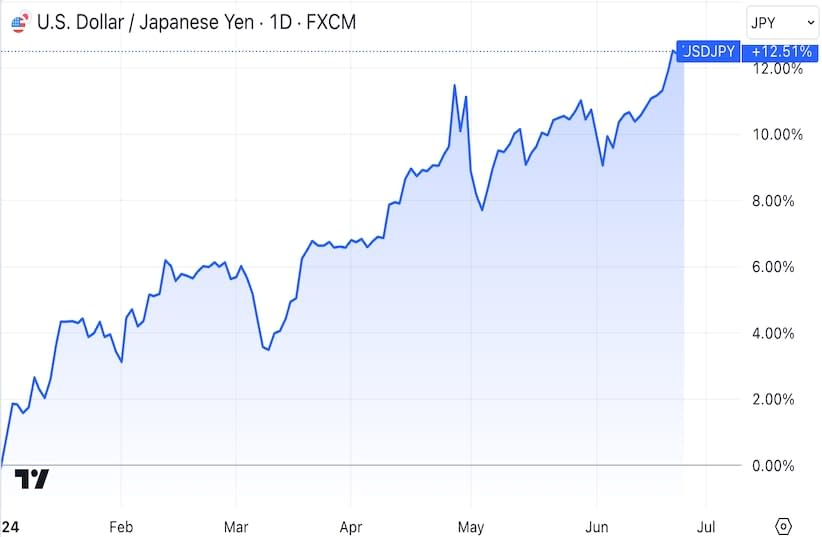Another week brings another wave of economic events stirring up the markets. Both earnings and the economic calendar are buzzing. Of particular interest is the release of PCE data, the US Federal Reserve's preferred inflation gauge.
Traders are bracing for volatility and potential entry opportunities later in the week as the PCE data looms on Friday. Turbulence is expected to present lucrative chances for forex speculators. With this in mind, the US dollar was well-bid at the start of the week as markets gained momentum across the board.
The US dollar index was trading higher on Monday morning, following two consecutive days of gains that lifted its valuation to nearly 106 from just above 105.
The PCE print for May will reveal whether price pressures have eased from April's 2.8% rate. If so, this will increase the likelihood of interest rate cuts this year. Despite projections of rate cuts circulating since the final quarter of 2023, the US dollar has been on an upward trend this year. From January through now, the dollar is up around 5% against a basket of six currencies.
The dollar's movement is most pronounced against a weaker Japanese yen – the USDJPY has advanced 13%.
Speaking of, the USDJPY was moving to the upside Tuesday morning with traders chasing that fresh 34-year high. The exchange rate peaked at ¥160.
The yen is at risk of sliding to levels last seen in 1986. A drop to 170 per dollar – about 10 yen from current levels – is possible amid continued selling of the yen in favor of the higher-yielding dollar.
The dollar has been the preferred currency for traders seeking safety and a place to park their cash while tech stocks are experiencing weakness. Moreover, Japan’s currency is under pressure due to the Bank of Japan's refusal to adjust interest rates.
Additionally, Japan’s Ministry of Finance, responsible for maintaining a healthy yen, remains silent about any intervention plans. If the situation worsens, Japan may intervene without warning to stabilize the yen and curb the excessive speculation.


